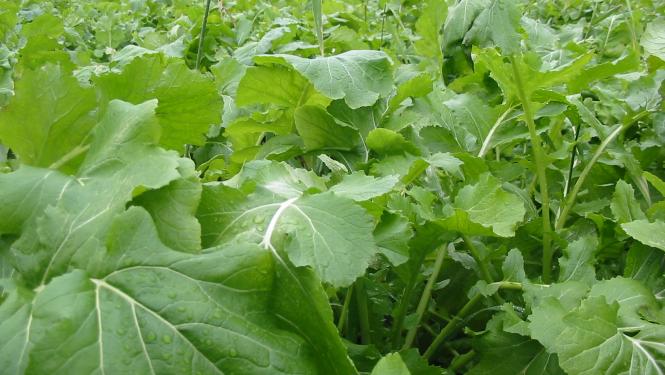A common question at summer annual planting time is which legume is best to add some protein to summer annual grasses? These grasses include millet, sorghum sudans, sudangrasses, and MasterGraze 60-day tillering corn (used for grazing and taking up the same growing window as many sorghum products). There are few options for the legume companion, because most of our legumes are cool season or perennials. Cowpeas and soybeans are the only summer annual legumes we carry that we can advise for planting in a summer annual forage mix. Soybeans, however, often get lignified fairly early, while cowpeas have thick, viny growth. They are high biomass producers, but their regrowth ability is limited, depending on the stage at which they are cut or grazed. Sunn hemp, another warm season legume, is recommended only for cover crop use, because its tall growth also lends itself to early, indigestible lignin production.
So, you might want more options when it comes to growing warm season protein. This summer try brassicas.
Brassicas actually have a higher protein content than many legumes, averaging 24% crude protein in our samples, and make excellent companions for sorghum-sudans and sudangrasses. Their high protein content can be well balanced by the highly digestible fiber of the summer forage grass, helping slow the rate of passage and increase utilization. Brassicas don’t lignify as they mature, providing high quality forage for the duration of their growth. Their growing times also match up well up with the grass lifecycle.
These combinations produce lots of forage within a short time, and in many regions, their brief growing window makes room for a double or triple cropping rotation.
Brassicas are also versatile in an agronomic sense. They grow well in cooler weather or heat and drought and tolerate a range of soil pH conditions. Shallow or waterlogged soils should be avoided. Brassicas come in a range of maturities, ready to graze in 42 to 90 days, and can be grazed twice. Turnips and radishes have a bulb that can be grazed at the last planned grazing (or when no regrowth is needed), while rapes do not have bulbs.
The low, leafy growth of brassicas is excellent for weed suppression, and provides an understory of grazing to complement the high growth of the grass. They also produce chemicals called glucosinolates, which break down in soil to form compounds that kill soil-borne disease-producing organisms.
Strip grazing of a brassica or brassica mixes is often the best management practice to prevent loss by trampling. Livestock can graze the lush growth off quickly and then move on. Animals should be introduced to brassicas gradually. It can take them about a week to adjust to the new feed; start by limiting grazing to 1-2 hours per day. Mixing the brassica with a more fibrous companion helps greatly in acclimating them to the new feed, in addition to improving digestion. Don’t turn hungry animals that have not been acclimated to brassicas onto a straight brassica pasture.
